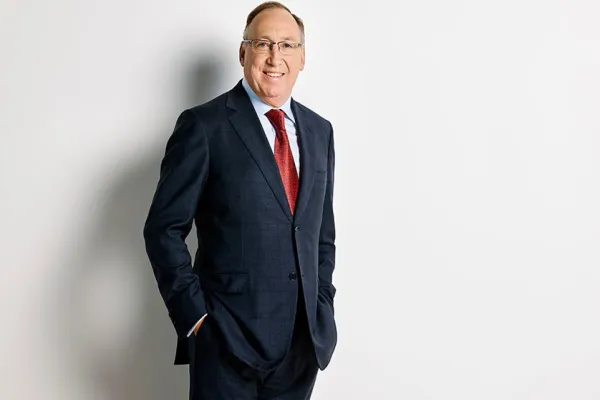Almost every credit card company does what Capital One Financial Corp. does -- they just don't seem to do it as well. The McLean, Virginia based bank has all but transformed the art of market research, direct-mail campaigns and advertising into a science for identifying and attracting credit card customers.
Capital One's proprietary method of mining huge amounts of data to customize pitches has allowed it to grow in 16 years from the credit card division of a middling regional bank into the sixth-largest U.S. card issuer, with more than 40 million cardholders. And even though it does not have a single conventional bank branch, it has attracted $25 billion in deposits. Through the first nine months of 2004, Capital One earned $1.35 billion, 55 percent more than in the same period in 2003.
Stockholders have done quite well in this winning card game. Shares rose 37.4 percent in 2004, to $84.21, 18 times the split-adjusted $4.57 at its November 1994 IPO. Shares of MBNA Corp., the U.S.'s other big credit card marketer, rose just 13.4 percent in 2004, to $28.19; they're up 15-fold since 1994.
"Wall Street is finally getting excited about what we've been talking about for a long time, and we're finally being recognized for it," says Richard Fairbank, Capital One's 53-year-old chairman and CEO. "We're delivering on what we've talked about: diversification."
Beginning in 1997, Capital One expanded from credit cards into auto, mortgage and small-business lending and took all those products into foreign markets. These efforts were overshadowed, however, by the bank's success in issuing U.S. credit cards.
No longer. Today, out of $75.5 billion in managed loans, Capital One has some $30 billion outstanding in accounts other than U.S. credit cards. Of those, $12 billion are auto loans, making the bank second to J.P. Morgan Chase & Co. among bank auto lenders. A further $7 billion represents credit card balances in the U.K., where Capital One is the seventh-biggest player. The bank is also selling credit products in Canada, Italy and Spain.
"From basically nothing in 1997," says Fairbank, "we get 39 percent of our managed loans and 29 percent of our net income from businesses other than U.S. cards, as of the third quarter [of 2004]." The company doesn't break out its income geographically except for U.S. cards, which netted $1.19 billion through September 30. International cards, auto lending and noncard businesses at home and abroad contributed an additional $323 million (adjustments for securitization transactions raise the segment totals above GAAP net income).
Fairbank earned his undergraduate degree in economics from Stanford University in 1972, then opened a swim school in the San Francisco Bay area and served as general manager of the nearby Ladera Recreation District. In 1981 he finished first in his MBA class at Stanford's Graduate School of Business and went to work for Washington, D.C.based consulting firm Strategic Planning Associates (now part of Mercer Management Consulting). With Nigel Morris, a London Business School MBA who joined SPA in 1985 (and who recently retired as Capital One's vice chairman at age 45 to spend more time with his family), Fairbank devised a highly computerized method of combing through consumer data gleaned from credit bureaus and other sources. They then designed credit card offers with various annual fee and interest rate combinations and tested the offers with small groups of prospects before unleashing formal campaigns.
The two consultants tried to persuade 20 top banks to hire them and implement their information-based strategy. Only Signet Bank of Richmond, Virginia, now part of Wachovia Corp., gave them a shot. In 1991, three years after taking charge of Signet's card division, the pair hit pay dirt with a mass mailing that offered cardholders the opportunity to transfer card balances from other banks and pay a lower interest rate. The first full year that the program was up to speed -- 1993 -- Signet boosted its card balances by 126 percent, to $5.3 billion, or nearly half of its $11.5 billion in total assets. The following year Signet spun off Capital One in an IPO.
Capital One prizes efficiency almost as much as it does ingenuity. The bank's marketing expenses through the first three quarters of 2004 were down $1.6 million from the same period in 2003, to $826.6 million, yet as of September 30, 2004, Capital One's managed loan balances had grown 12 percent year-over-year -- twice the U.S. credit card industry growth rate. The rate of charge-offs also improved to 4.05 percent from 5.44 percent a year earlier.
CEO Fairbank, who takes no salary -- in 2003 he earned $9.9 million in performance-linked options -- recently discussed the Capital One method with Institutional Investor Assistant Managing Editor Jeffrey Kutler.
Institutional Investor: Is what you do art or science?
Fairbank: It's what I call the power of testing and customization that really drives this company. When we launched the balance-transfer product back in 1991, that was one of 300 tests. Now we are running tests at the rate of 60,000 a year, a scale that has allowed us to continue to innovate and optimize how we do business. We do the testing not just to find out what works the best but also to arrive at what works best for each consumer.
Do you call that mass customization?
That's an oxymoron, but that's the end-game of Capital One, and it's where the world of financial services -- and much of consumer marketing -- is heading.
How do you contend with business cycles?
Business cycles are very difficult to model and predict, and anyone who claims to be able to do that is probably kidding himself. Here, rather than predict business cycles, we assume them. We mechanically plug into all our decisions a significant worsening of the economy and of the competitive marketplace. So when we roll out something that we've tested, it's robust enough for a substantially worse environment.
Can't competitors copy your strategy?
We work hard to stay ahead. It's all too obvious that the credit card industry and the broader world of consumer financial services are becoming increasingly consolidated among large, very tough, deep-pocketed competitors. Although competition and consolidation are definitely challenging, our strategy is tailor-made for this market. We de-average the consumer marketplace, find little pockets of opportunity, come out first with a customized innovation and move on when the competition copies us.
Is there anywhere your strategy has not worked?
For our strategy to work, we have to be willing to dial back on things that are working less well so we can focus on the best opportunities. The most noticeable pullbacks we've made are from France and South Africa, which we announced in the third quarter after deciding that we didn't see the same upside [there] that we see in other areas.
Has your view of international opportunities changed?
No. The international business remains one of the very fastest growing parts of Capital One and an important part of our destiny. Within weeks of announcing that we were getting out of the two countries, we announced that we were acquiring HFS Group, a U.K. home equity loan broker [for $117 million]. In the U.K. we are doing something very similar to what we did in the U.S. -- starting with credit cards and expanding into a variety of other markets by leveraging our customer base, information, scale and brand.
Are international markets always receptive to your approach?
In the long run globalization will lead to more homogenization than we see today. The reality is that the differences between markets are greater than the similarities. Canada and the U.K. are very similar to the U.S. in the way consumers use credit cards, but in continental Europe debit cards are much more prevalent. Our business on the Continent is still in a testing phase. One of our fundamental strategic principles is to work backward from where customers are and where markets are going, as opposed to running around with a Capital One hammer looking for nails just like ours.
Do you need branches to succeed in consumer finance?
We believe the world is going toward mass-customized solutions and a greater reliance on direct channels, of which the Internet will probably end up as the most important. But we also believe that companies that define themselves by channel run a risk, because most consumers don't define themselves that way. They simply want to have their needs met. Although we very much expect that direct marketing will gain ground in consumer financial services, and though we have built one of the world's largest direct-marketing companies, we have invested heavily in just about every channel that's out there. A good example is our auto finance business, which is primarily conducted through dealerships.
You have an unusual compensation package -- options but no salary.
Our board and I agree that we want to ensure the continuity of what got us here: the entrepreneurial spirit. If we believe in it, we put everything on the line; we put our money where our mouth is. I wanted to set that example.





